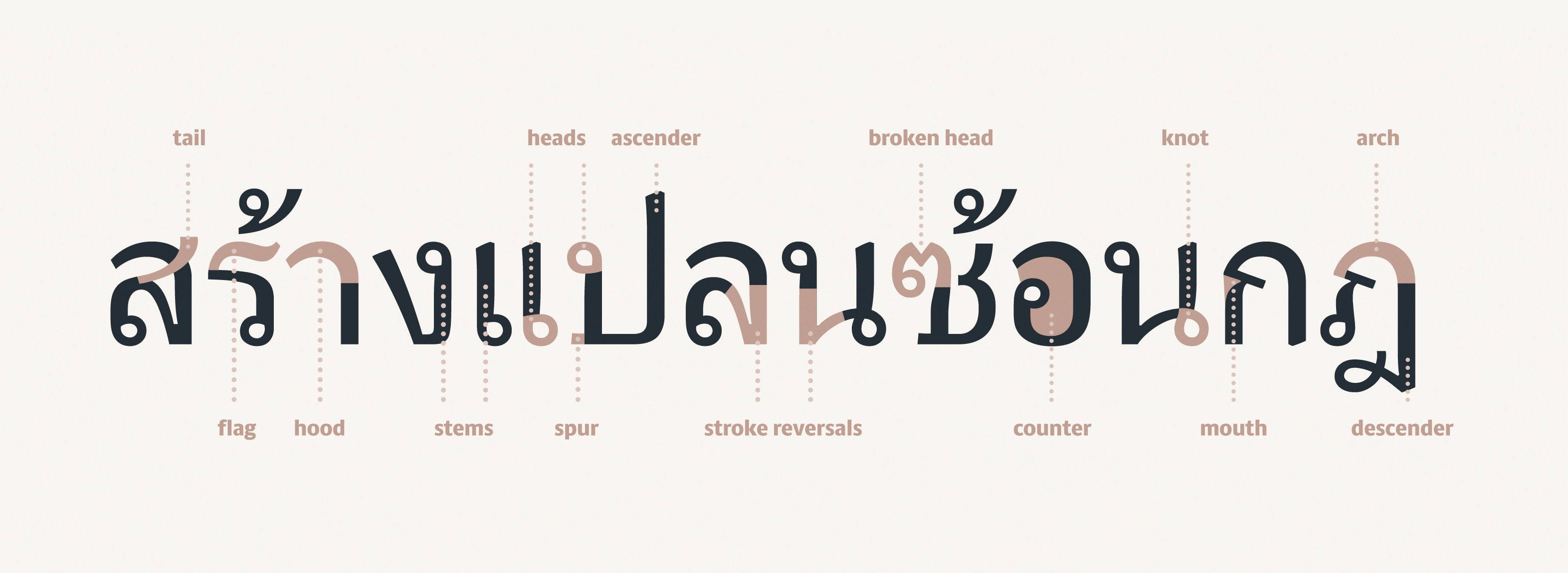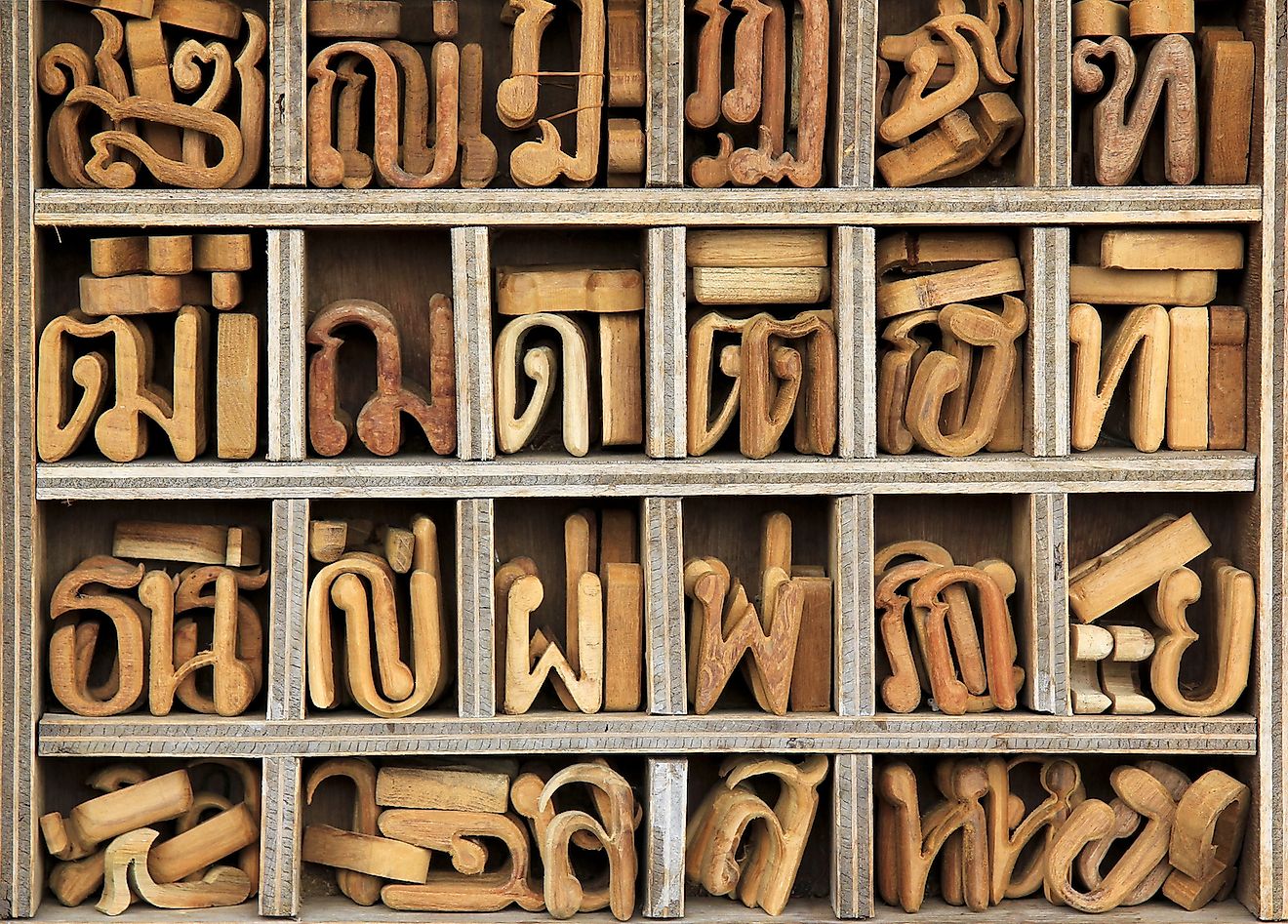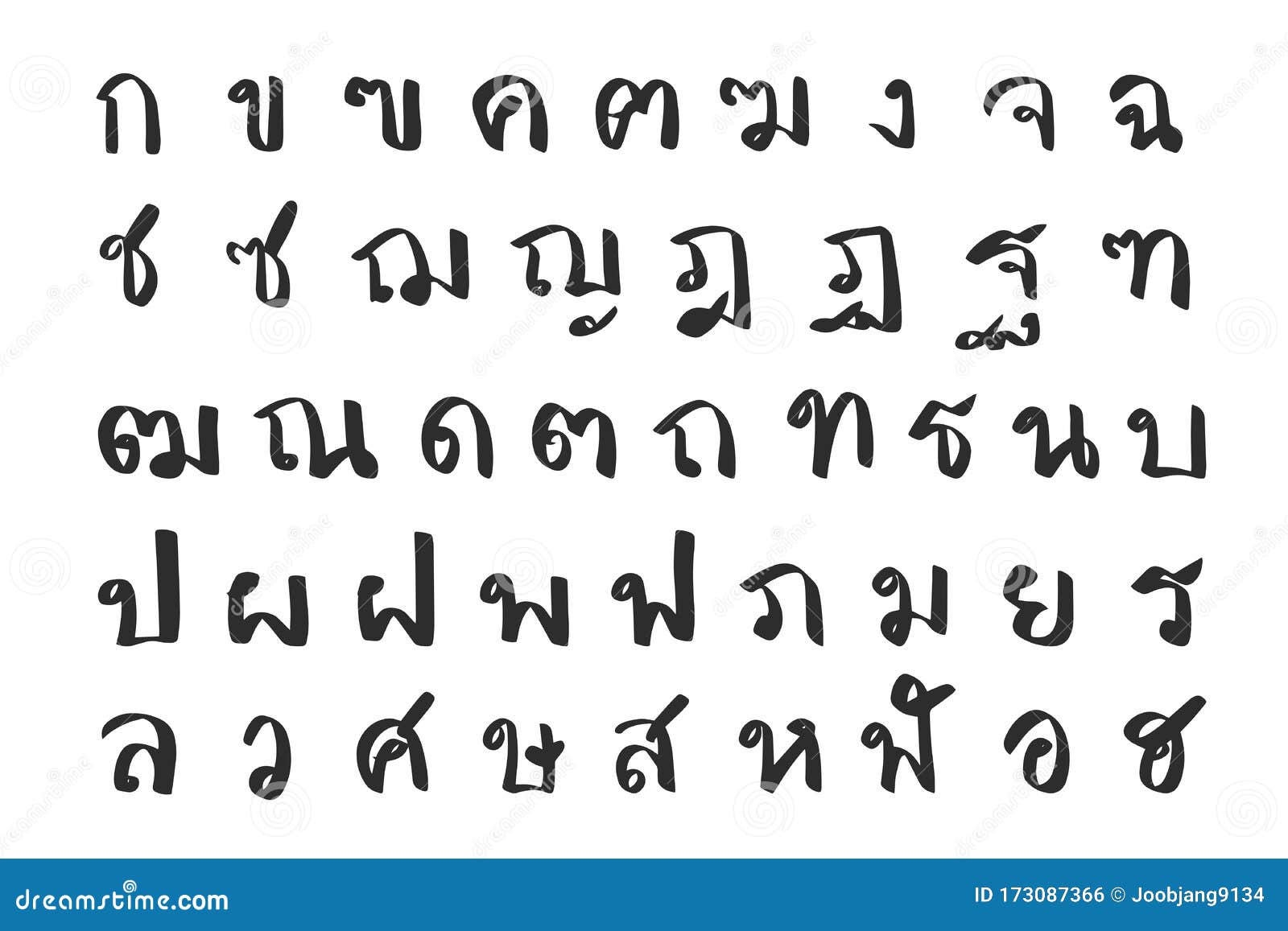The Thai written language, a symphony of characters and symbols, has played a pivotal role in shaping the cultural tapestry of Thailand. As we delve into its intricate history, unique characteristics, and evolving uses, we uncover a vibrant and dynamic language that continues to thrive in the modern world.
From ancient inscriptions to contemporary digital communication, the Thai written language has witnessed a remarkable journey of adaptation and innovation. Its distinct alphabet, vowel system, and tone marks set it apart from other Southeast Asian writing systems, making it a fascinating subject of study.
Historical Evolution of the Thai Written Language

The Thai written language has a long and complex history, dating back to the 7th century. The earliest known Thai inscriptions were written in a script called the Mon script, which was borrowed from the Mon people of Myanmar. The Mon script was used to write the Pali language, the sacred language of Theravada Buddhism.Over
time, the Thai people developed their own unique script, which is now known as the Thai alphabet. The Thai alphabet is a syllabary, which means that each symbol represents a syllable. The Thai alphabet has 44 consonants, 32 vowels, and 4 tone marks.The
Thai written language has been influenced by a number of other languages and writing systems, including Sanskrit, Pali, and Khmer. Sanskrit is the classical language of India, and many Thai words are derived from Sanskrit. Pali is the sacred language of Theravada Buddhism, and many Thai religious texts are written in Pali.
Khmer is the language of Cambodia, and the Thai alphabet was originally derived from the Khmer alphabet.The Thai written language has undergone a number of changes over the centuries. The most significant change occurred in the 19th century, when King Mongkut introduced a number of reforms to the Thai alphabet.
These reforms simplified the alphabet and made it more accessible to the general population.Today, the Thai written language is used to write a wide variety of texts, including newspapers, magazines, books, and religious texts. The Thai written language is also used in government and business.
Characteristics of the Thai Written Language
The Thai written language possesses distinctive features that set it apart from other writing systems. It employs a unique alphabet, a complex vowel system, and a system of tone marks, all of which contribute to its rich and expressive nature.
In comparison to other Southeast Asian writing systems, such as Burmese, Khmer, or Lao, the Thai written language exhibits several notable differences. These variations include the absence of consonant clusters, the use of a unique vowel system, and the presence of tone marks to indicate different pronunciations of words.
Alphabet
The Thai alphabet consists of 44 consonants and 32 vowels, each representing a distinct sound. The consonants are divided into three classes based on their position in words, and they can be combined with vowels to form syllables.
Vowel System
The Thai vowel system is highly complex, with a combination of short and long vowels, as well as diphthongs and triphthongs. Vowels can be written either above, below, before, or after the consonant they modify.
Tone Marks
Thai is a tonal language, meaning that the pitch of the voice can change the meaning of a word. The Thai written language utilizes five different tone marks to indicate the various tones, each of which has a specific meaning and usage.
Uses of the Thai Written Language

The Thai written language serves as a vital means of communication in various aspects of Thai society.
In the realm of literature, Thai script graces the pages of novels, poems, plays, and other literary works, enriching the cultural tapestry of Thailand. It enables authors to express their creativity, explore human emotions, and narrate historical events.
Education, Thai written language
The Thai written language plays a fundamental role in education. It facilitates the transmission of knowledge across disciplines, from textbooks and scientific journals to research papers and academic dissertations. It empowers students to acquire information, develop critical thinking skills, and engage in intellectual pursuits.
Government
The Thai written language serves as the official medium of communication for government agencies and institutions. It is employed in the drafting of laws, regulations, and official documents. It ensures transparency, accountability, and the efficient functioning of the government.
Everyday Communication
Beyond formal settings, the Thai written language permeates everyday communication. It connects individuals through personal letters, emails, social media posts, and online forums. It facilitates the exchange of ideas, news, and personal experiences, fostering social interaction and community building.
Challenges and Opportunities for the Thai Written Language
The Thai written language faces several challenges in the modern world. One challenge is the influence of English. As English becomes increasingly globalized, it is having a significant impact on the Thai language. Many Thai words are being replaced by English words, and some people are even beginning to write Thai using the English alphabet.
This can make it difficult for people who are not fluent in English to read and write Thai.
Another challenge facing the Thai written language is the rise of digital communication. With the advent of the internet and social media, people are increasingly communicating in informal ways. This can lead to a decline in the use of formal Thai, as people become more accustomed to using slang and abbreviations.
This can make it difficult for people to communicate effectively in formal settings, such as in business or government.
Opportunities for the Thai Written Language
Despite the challenges it faces, the Thai written language also has a number of opportunities to adapt and thrive in the 21st century. One opportunity is the growing interest in Thai culture and language around the world. As more people become interested in Thailand, there is a growing demand for Thai language learning materials.
This can help to promote the Thai written language and make it more accessible to people outside of Thailand.
Another opportunity for the Thai written language is the development of new technologies. These technologies can be used to create new ways to learn and teach Thai, and to make it more accessible to people with disabilities. For example, there are now a number of online Thai language learning programs that can be used by people all over the world.
These programs can help to make Thai more accessible to people who do not have access to traditional language classes.
Regional Variations of the Thai Written Language
The Thai written language exhibits regional variations, with distinct scripts and pronunciations in different parts of the country. These variations have historical and cultural roots, shaping the diverse linguistic landscape of Thailand.
The three main regional variations of the Thai written language are:
Northern Script
- Used in the northern regions of Thailand, including Chiang Mai and Lampang.
- Characterized by unique consonant and vowel forms, differing from the Central Thai script.
- Preserves certain archaic features not found in other Thai scripts.
Central Script
- The standard and official script used in central Thailand, including Bangkok.
- Serves as the basis for the Thai language taught in schools and universities.
- Widely used in literature, media, and official documents.
Southern Script
- Found in the southern regions of Thailand, particularly in areas near the Malaysian border.
- Shares similarities with the Central Thai script but incorporates unique consonant and vowel forms.
- Preserves certain Malay influences due to historical interactions between the two regions.
These regional variations contribute to the richness and diversity of the Thai language. While they may pose challenges in communication across regions, they also serve as a testament to the historical and cultural diversity of Thailand.
End of Discussion

As we bid farewell to our exploration of the Thai written language, we recognize its enduring significance as a medium of expression, education, and cultural preservation. Despite challenges posed by globalization and digitalization, the Thai written language remains a resilient and adaptable force, poised to continue its vibrant legacy in the years to come.
FAQ Insights: Thai Written Language
What is the origin of the Thai written language?
The Thai written language evolved from the Mon script, which was used in the ancient kingdom of Dvaravati in the 6th century CE.
How many characters are there in the Thai alphabet?
There are 44 consonants and 32 vowels in the Thai alphabet.
What are tone marks used for in Thai?
Tone marks are used to indicate the different tones of words in Thai. There are five tones in Thai: mid, low, falling, high, and rising.